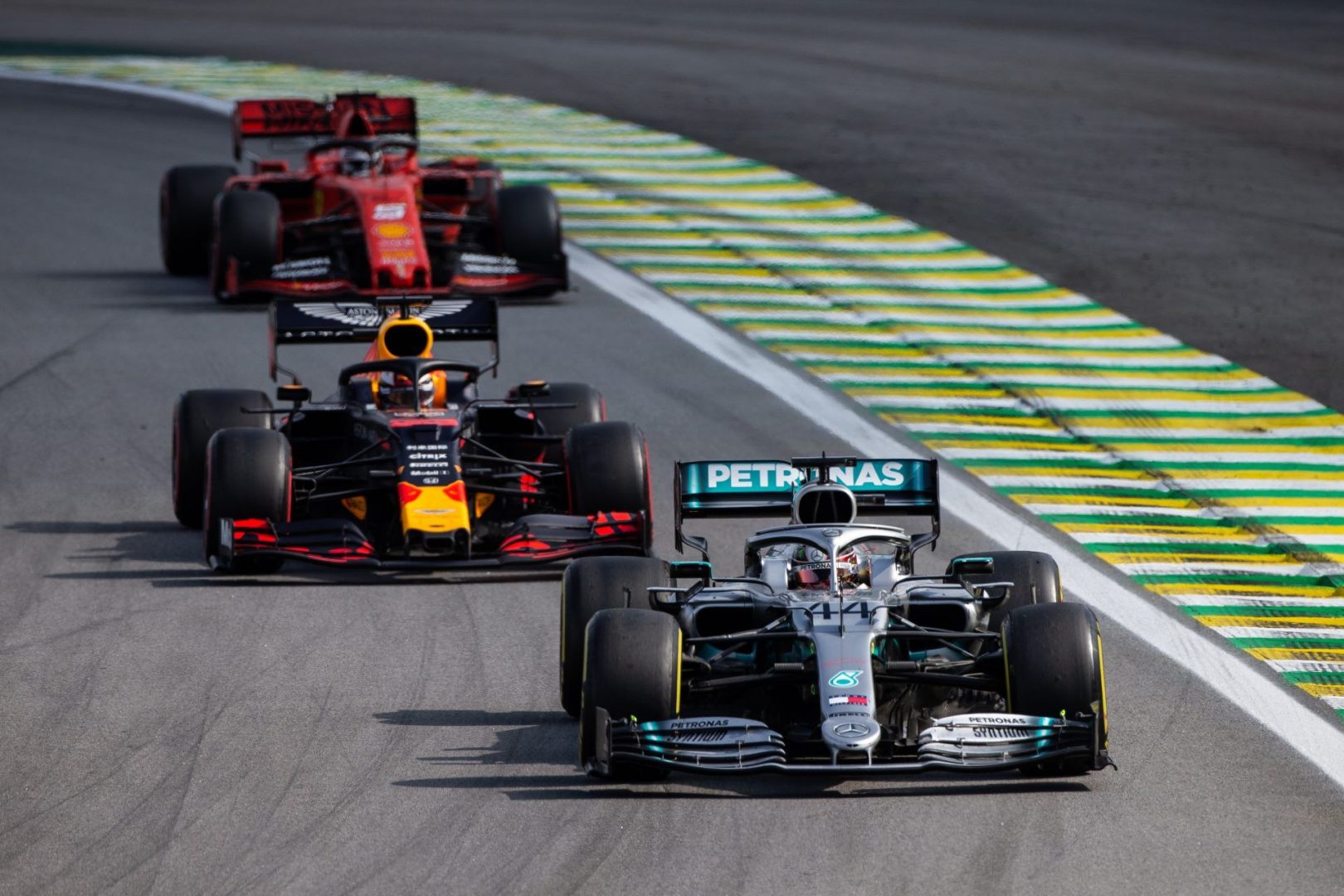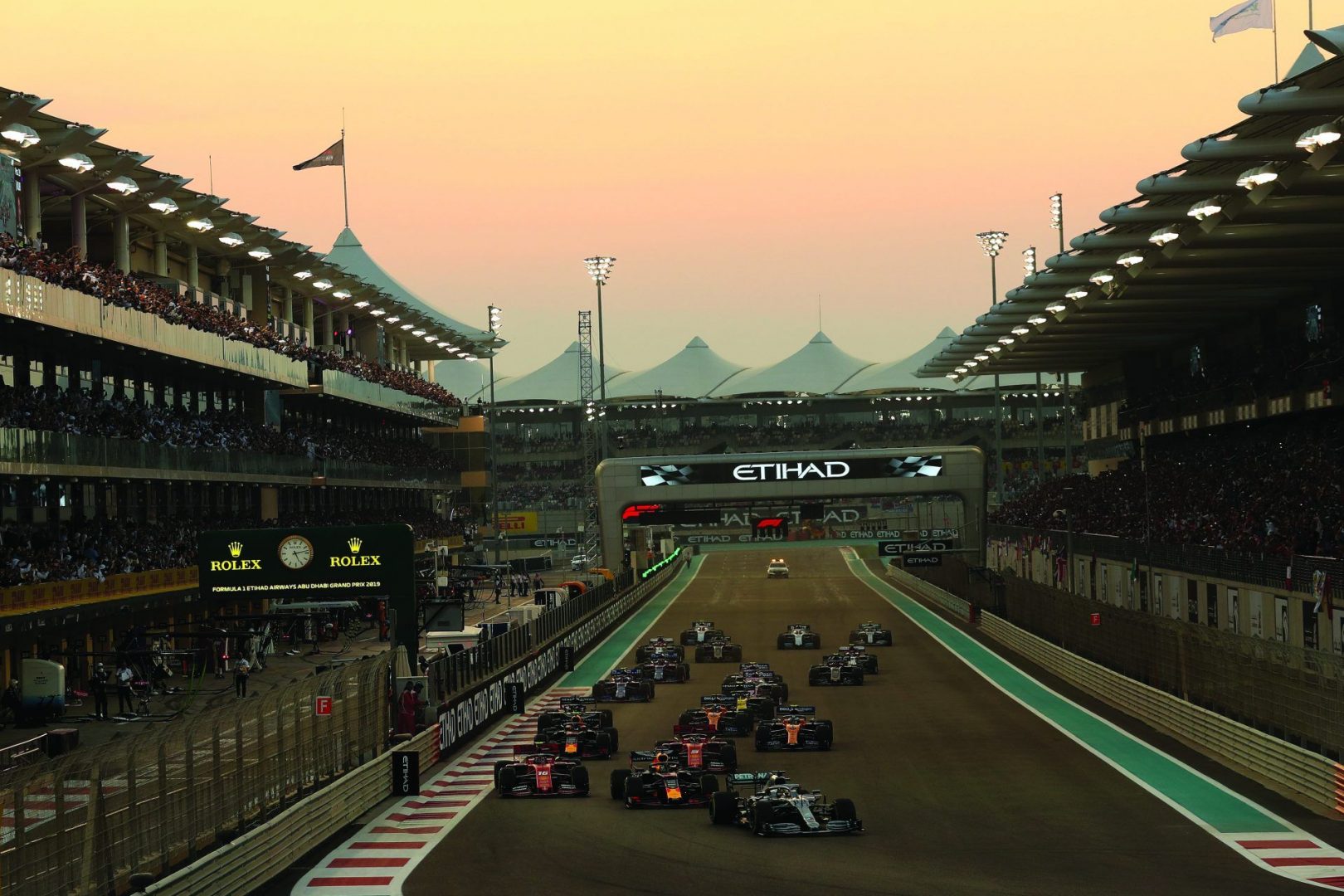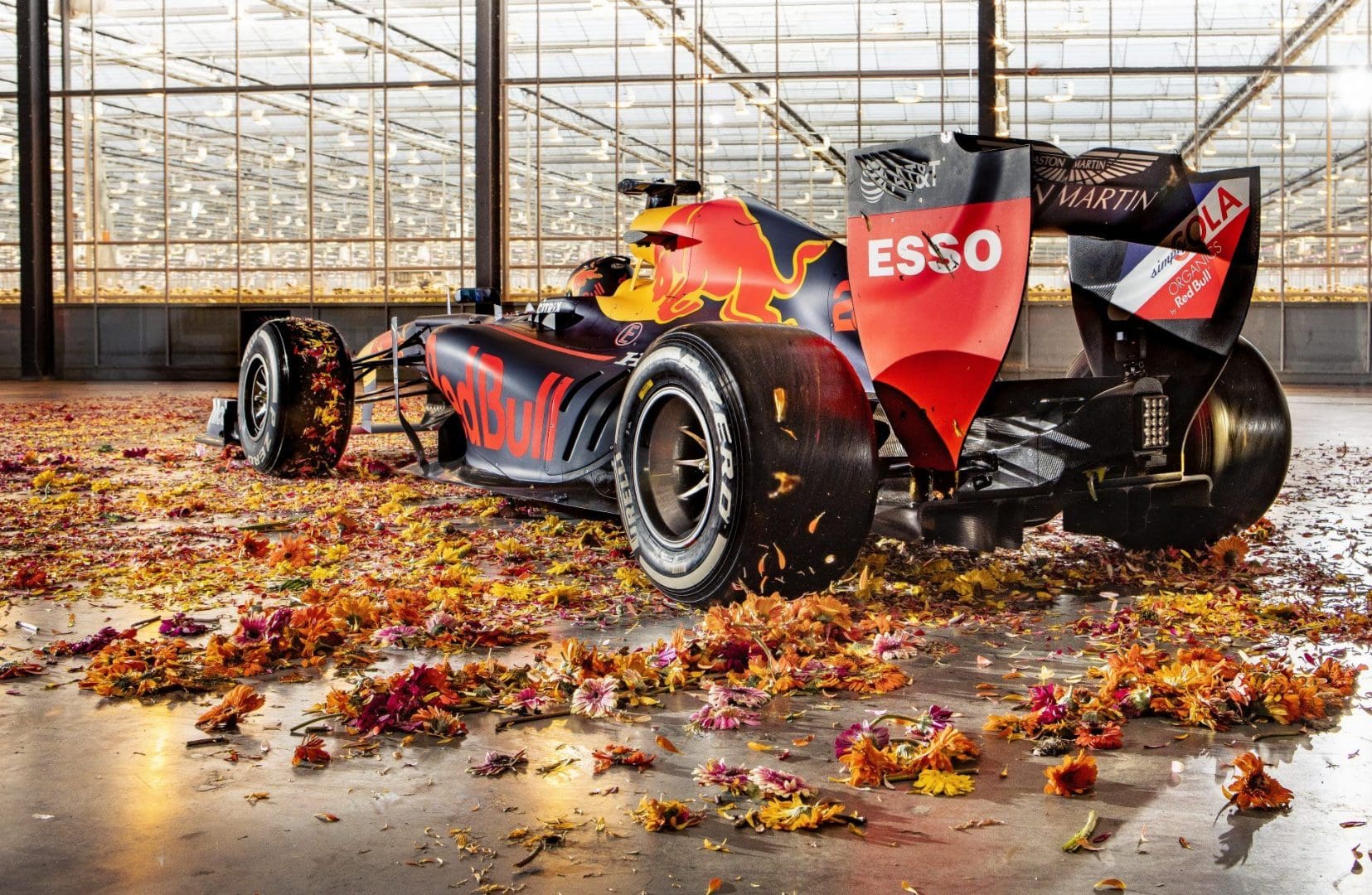Trickle Down Tech
It doesn’t matter how fast you go, how well you stick to the track, how hard you train. You can’t outrace a global lockdown due to a pandemic. No field has been left untouched, events that would normally draw thousands have suddenly been left in limbo as the world gets its act together. F1 is no exception as it faces its latest start in season since 1988. Cancellations are pushing its start out to the Azerbaijan Grand Prix on June 7th at the time of writing, and even then, no one is holding their breath.
So with that established, let’s take a breather and really contemplate everything this motorsport has done for racing, transportation and technology as a whole while the racing itself takes a quick pitstop.
Top Image Credit: © Rutger Pauw / Red Bull Content Pool
Let’s start by saying the world of F1 has gotten a little out of hand. Since 2014, usually only Mercedes, Ferrari, and Red Bull go on to win races and it all comes down to that one little thing, cold hard cash. Together, all 10 teams spend $2.6 billion annually, with the top three easily outspending the bottom seven. The 2019 budget for Mercedes, Ferrari, and Red Bull all sit between the $450-500 million mark. The runners up to those figures are Renault and McLaren bringing along around $270 million each. Williams, at the bottom of the stack – you have to feel sorry for them – run on the smell of an oily rag and a budget of $132 million. It shows in their performance as well, enjoying the exhaust fumes of all the cars in front.
F1 has been trying to sort out this situation for a while now, with positive steps being made and coming into effect at the beginning of 2021. According to official FIA documents, it is to promote competitive balance, sporting fairness, and the long-term financial stability and sustainability of the F1 Teams. In practice, this means a budget cap of $175 million a year, a number all but the bottom four teams will have to scale down to meet. Although as things evolve, this cap could be brought up as F1 considers going from 21 to 25 races a year, with an extra million added to the budget for each one, for pit stop orange slices and sandwiches presumably. The cap also has exceptions for things like salaries, marketing, accomodation, and $15m for power unit costs. How much of an effect will this actually all make on the playing field? FIA president Jean Todt admits probably not as much as everyone would like. “For about seven out of 10 teams it will have no influence,” Todt admits. “It will have only influence on three teams. But still it will diminish the gap between those seven teams and the three others. So it’s a good thing.”
The current budget is a somewhat more diluted version of a previous iteration, but makes concessions for the larger teams. McLaren Racing CEO, Zak Brown, pointed out that earlier drafts had the budget set to $150mil with fewer exceptions.

Image Credit: © Rolex
“I think what was presented in Bahrain was a better financial model, that would have produced the same race results, maybe arguably better race results because it would concertina the field that much more.”
“I think drivers should have been included in the budget cap, whatever that budget cap is,” said Brown. “What that would do would be [to] force teams to make decisions on where they want to spend money.
“If you felt the driver made the biggest difference, keep paying your drivers what you’re paying them today. But I think it would have put pressure on the team to figure out where do you get your biggest value. So it wouldn’t have automatically reduced their salaries but it would have forced teams to make more decisions on where they spend their money.”
Of course there’s always the chance of wildcards throwing a spanner in the works. Racing Point, a midfield team bought by Canadian billionaire, Lawrence Stroll, has acquired one of the big threes, Red Bull’s, secret weapon. The very heart of what gets them across the line, none other than Aston Martin. An exclusivity deal with Red Bull is coming to its conclusion with Aston at the end of the 2020 season and Stroll just so happens to be an investor in Aston. This merger with Aston is a big deal for Racing Point, whose name will be phased out in the rebrand to simply be ‘Aston Martin F1 Team’. “Everyone is proud to represent a legendary car manufacturer returning to the pinnacle of motorsport,” said Team Principal, Otmar Szafnauer.
“A brand with the pedigree and history of Aston Martin needs to be competing at the highest level of motorsport,” said Stroll. “I think it’s the most exciting thing that’s happened in recent memory in Formula 1 and it’s incredibly exciting for all stakeholders in the sport, especially the fans. I can’t think of a better name for a Formula 1 team.”

This is the first time Aston has been involved in F1 as a works team since the ‘59 ‘60 seasons when they built their entire car from the ground up. Their partnership with Red Bull netted the two 12 wins, 50 podiums and six pole positions together.
“Racing forms part of the original DNA of the company and this partnership reinforces the message,” says Aston Martin’s President and Chief Executive Officer, Andy Palmer. “It’s in the name. Lionel Martin built and raced his car up Aston Hill, so it’s always been part of what we are.”
But apart from an exhilarating race we get to watch, with cars that stick, handle and perform better than almost anything else on four wheels on the planet, what do WE get out of that budget? It’s a weird question, because you don’t expect anything out of a rugby player after he’s punted the ball. That’s about where the technology ends for rugby. But for F1, it’s an entirely different question. We’re talking about the biggest performance car manufacturers in the world pouring money into technology that will give them the edge over one another. They’re forging each other into better competitors (at least in theory), and that technology doesn’t just stay in a bubble.

The F1 power unit is the most efficient engine on the planet. In six years of development, efficiency of the V6 has increased by 10 percent. Just comparing the jump from V8 thermal efficiency to V6 the leap was massive. In the V8 era, thermal efficiency made it to 29 percent, the V6 turbo-hybrids easily leapfrogged to 40 percent, and present day, it stands at over 50 percent. Fuel efficiency and speed are also lightyears ahead. Today, you can find F1 derived 1.6-litre turbo hybrid power units in the Mercedes-AMG’s Project One hypercar and other hybrid tech used with their S-Class. The paddle shift gearboxes developed by F1 way back in the late 80s are now a standard feature in road cars. Kinetic energy recovery systems (KERS for short) was originally a way of reclaiming some of the braking energy created on the track, it’s now being used in green tech and cars as humble as the Nissan Leaf.
Aston Martin has also brought all the raw power of F1 technology to road-legal machines in the form of the Valkyrie hypercar, which have started appearing on roads earlier this year. Sure there’s only 150 of them and they’re worth $US3.2 million each but by God, what a car. From it’s F1 inspired 6.5-litre V12 making 746kW and 740Nm (and a hybrid setup which can push total outputs to 865kW and 900Nm) with revs up to 11,000rpm, it’s one of the most powerful engines on the road. It also features that F1 KERS tech I mentioned earlier, as well as F1 inspired aerodynamic aids. Aston Martin’s chief, Andy Palmer, believes it’s not only ready for our roads, but easily the circuit, claiming it could qualify for the first five rows of F1.

Image credit – © Rolex
F1 technology doesn’t even stay in its lane. It’s in your cycle lanes and waterways as well, winning races with its aerodynamics and carbon fibre technology like in the case of the Venge racing bike McLaren worked with. Meanwhile the America’s Cup appears to have a looser relationship with water every race with F1 veterans like Red Bull’s Adrian Newey and former McLaren boss, Martin Whitmarsh, coming in to bring their expertise to supercharging the once meandering regatta.
McLaren in a case study is particularly proud of their team up with Singapore Mass Rapid Transit. Their F1 cars are rigged with 300 embedded sensors that can analyse and collate data points about the vehicle’s health while on the track. This gives the pit crew a clear idea of how everything’s doing, and how they can improve the car in real time. McLaren has taken this technology and has adapted it to Singapore’s train network.
“When implemented fleet-wide, we expect to bring about enhanced safety, reliability and comfort for commuters on our rail network.” says Desmond Kuek, SMRT President and Group CEO.
All these numbers and data points would almost be meaningless to the casual observer though, so to help crews work more efficiently, it’s all collated into an easily digestible form which McLaren has dubbed, Decision Insight. This data science has even taken to the skys with Decision Insight being brought to Heathrow Airport to help traffic controllers deal with the madness of one of the busiest airports in the world. It can do everything from finding the optimum approach pattern to the fastest journey to the right gate, delivering and picking up passengers and then departing as quickly as possible. Every time you fly, there’s a chance that F1 has shaved precious minutes off your commute.
I seem to be making a pretty good case for McLaren’s $270 Million budget, and I haven’t even gotten into F1 sensors making their way into the health field yet. But let’s try and move along.
If you have a set of Pirelli road car tyres (and you may well do, they’re the fifth largest manufacturer in the world for tyres), you may be directly benefiting from F1’s pedantic nitpicking over getting maximum traction and longevity to achieve consistent lap times. To do this, they coated the tyres in heat-sensitive stickers coated with thermochromic ink. Take the tyres out literally for a spin and come back, viola, you can now reveal the maximum thermal exposure that each surface has experienced. This information has helped Pirelli understand where to improve their designs, along with creating highly efficient tread patterns to minimise the effects of aquaplaning.
Ferrari’s 458 Italia has directly benefited from F1 tech. In the early 00’s, Ferrari had started putting Diamond Like Carbon (DLC) into its piston skirts as a way to reduce friction and increase power output. It must have been a success as well because in 2010, the 458 Italia was sporting it as well.
I wonder whether all these efficiencies would have happened without the massive budgets behind them to tinker with. But then you think about the likes of Burt Munro and you realise that it’s not about the budget, it’s about the human ingenuity and drive to excel that pushes us forwards. F1 is just one amazing example of that drive.

LEWIS HAMILTON (GBR) MERCEDES GP.
MAX VERSTAPPEN (NL), RED BULL RACING.
CHARLES LECLERC (MON) SCUDERIA FERRARI.
Image credit: © Rolex
Rolex, It’s in Racing’s DNA
Gloved hands are held in a vice grip on the steering wheel of the 1930s era Bluebird. Extremely modern considering it’s only late 1935. The finish line blurs past. Sir Malcom Campbell only now slows down, takes a look at the Rolex Oyster strapped to his wrist. Judging by the reactions down the flats, he’s done. He’s the first man to break 300mph. Since this time, Rolex has been a part of racing DNA. From being the official timepiece of F1 to sponsoring endurance races like the Rolex 24, they’ve been constant companions for the old-school Flying Scotsman, Sir Jackie Stewart, as much as they have been for the new breed, Nico Rosberg. The day after Rosberg’s massive win of the Monaco Grand Prix, he nipped out to buy his wife a wedding gift, a rose gold Daytona. “I went to my wife’s watch and then looked to the right and saw the green Submariner, a watch I had always admired. I looked again and decided in that moment, ‘Nico, you just achieved one of your biggest dreams, to win the Monaco race. It’s time to reward yourself with an amazing gift.’ So I bought both watches.”
Keep an eagle eye out and you’ll still spot the Oyster Perpetual Submariner Date on his wrist. Five years later, Rolex would make it official and sponsor him as a brand ambassador.

